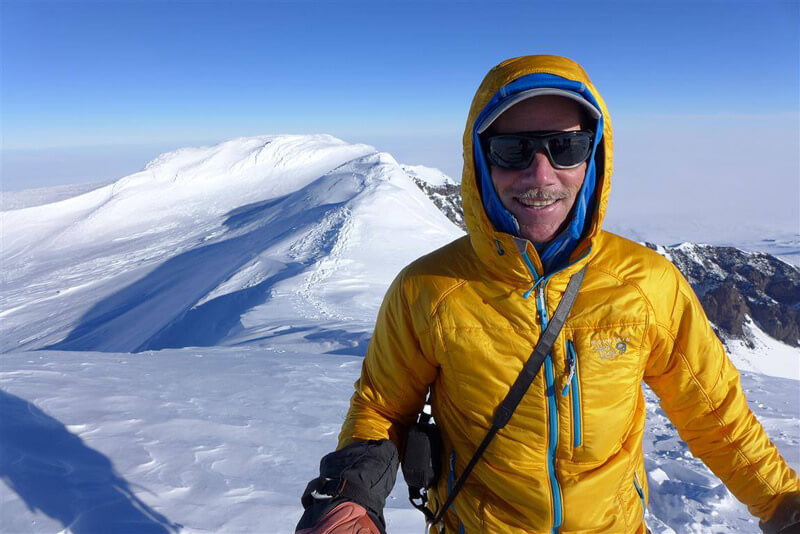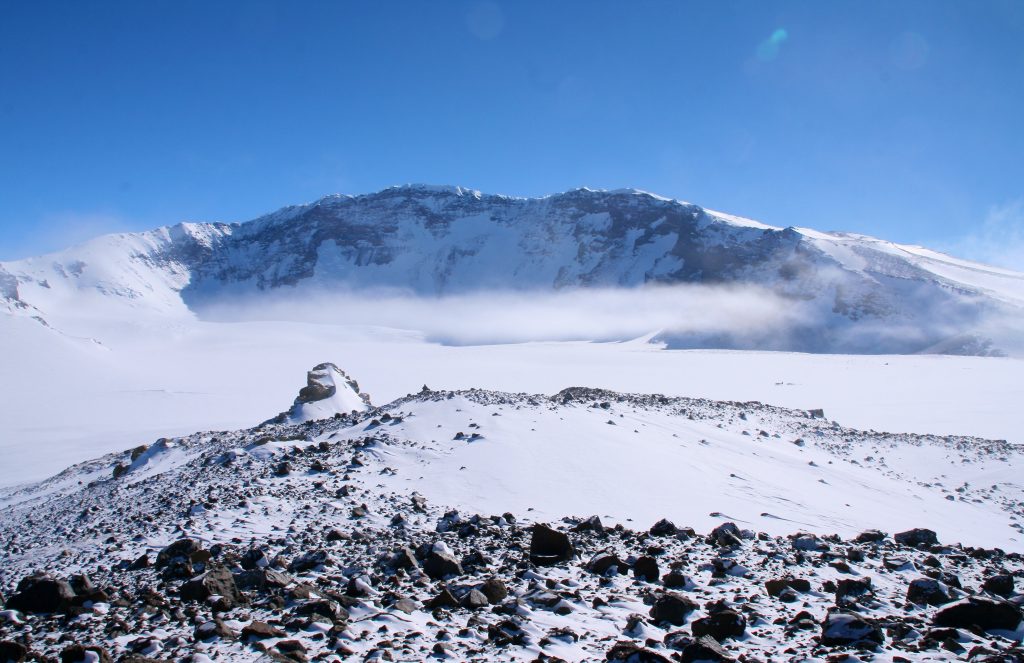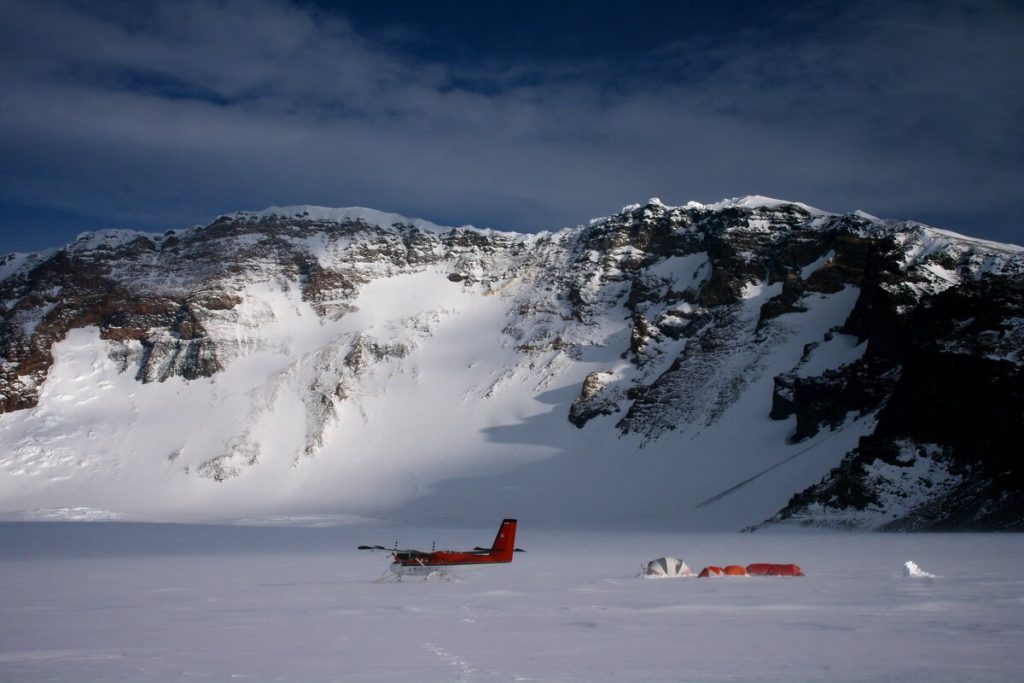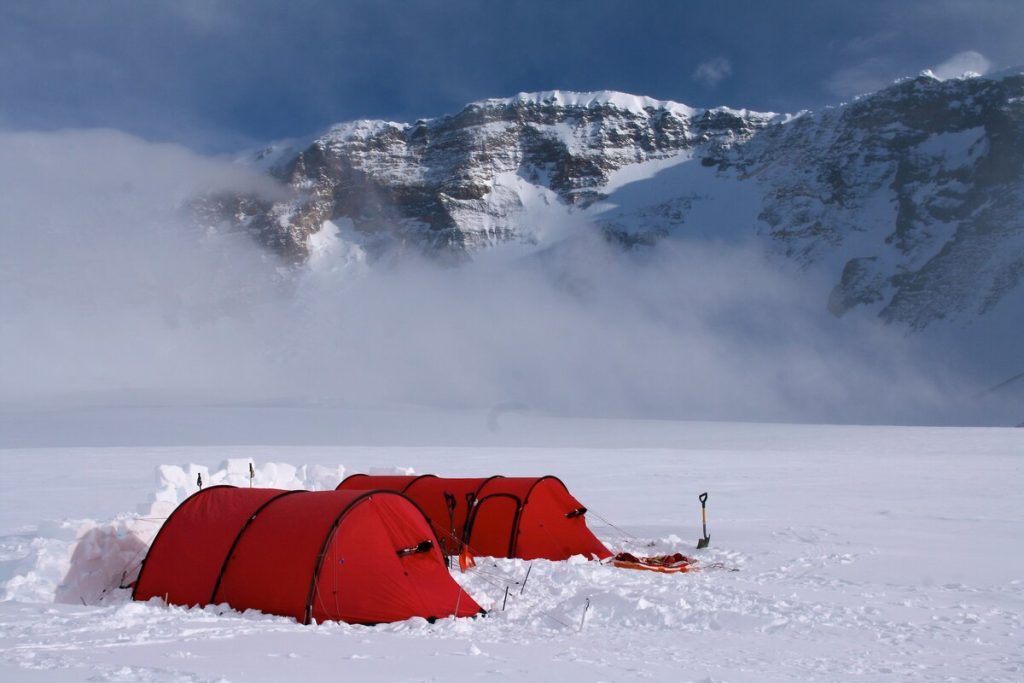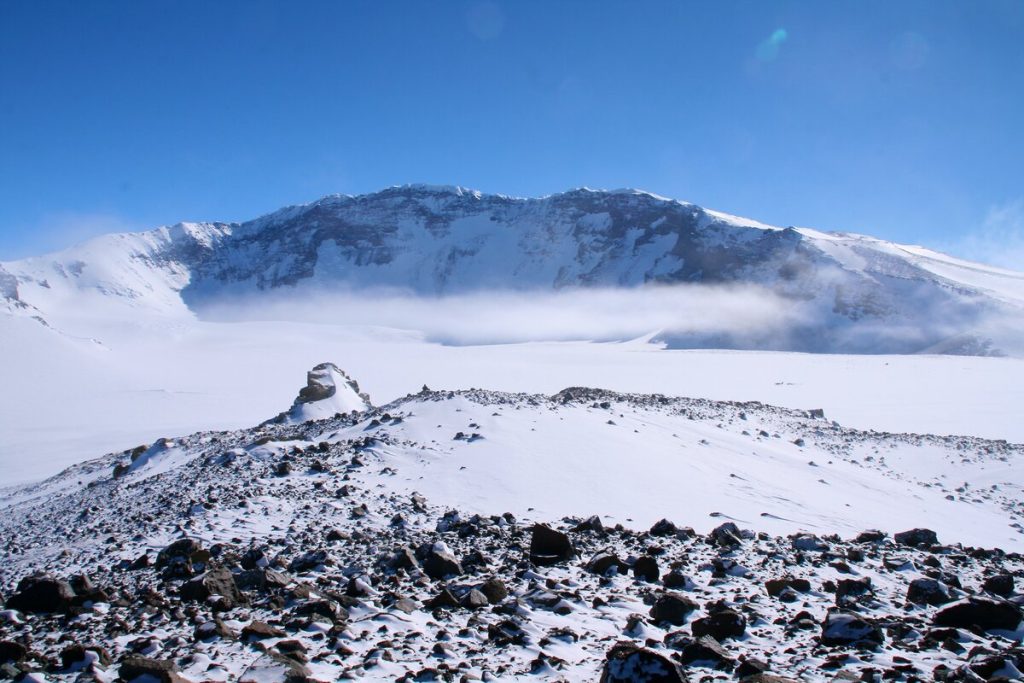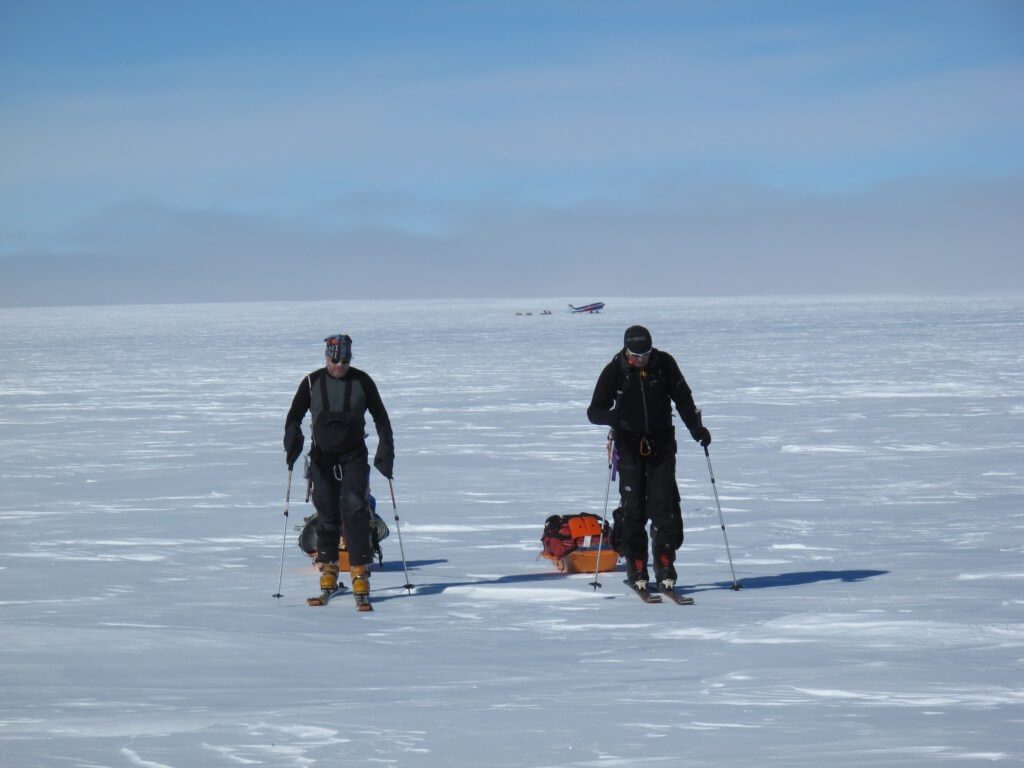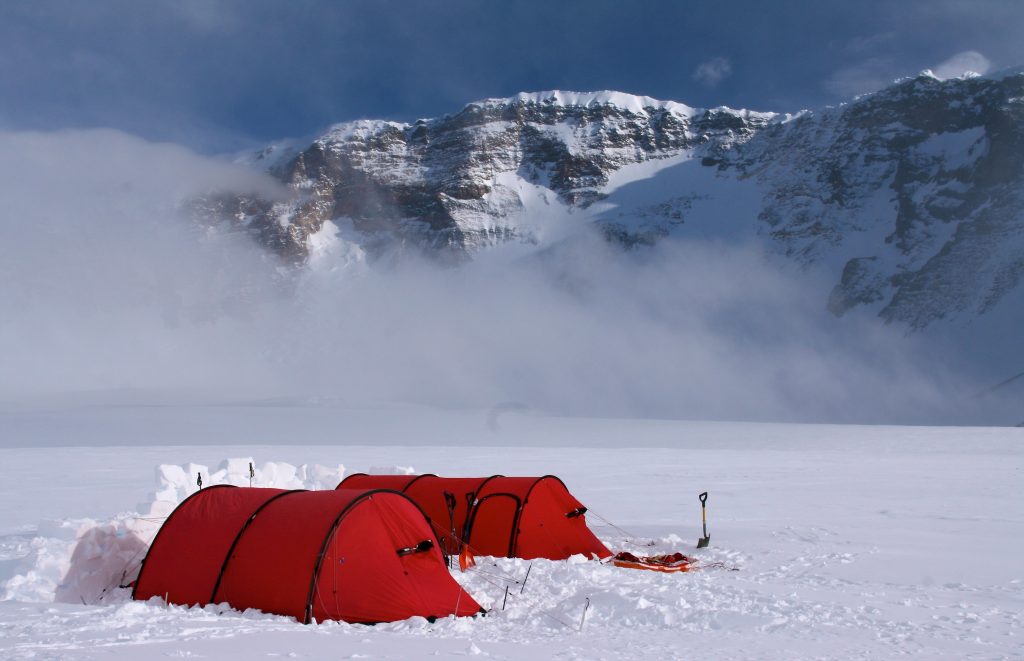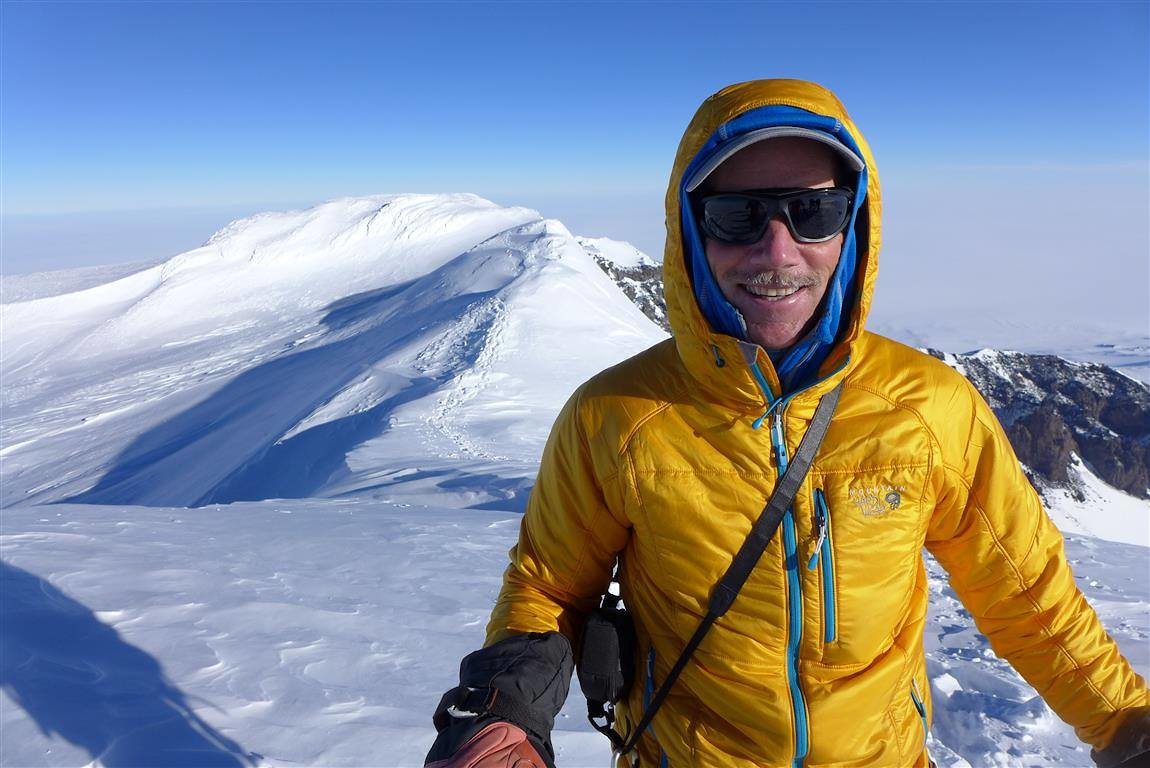
Climb Mount Sidley
Antarctica's Highest Volcano
Be among the few to have climbed Antarctica’s highest volcano and one of the Volcanic Seven Summits. Join the ultimate mountaineering expedition to Mount Sidley 14,058 ft (4285 m) and stand atop one of the most remote summits on earth.
Sidley is a huge mountain, set on the white expanse of the Polar Ice Sheet. This majestic peak features a 3 mi (5 km) wide caldera and sheer walled amphitheater, created by an explosive eruption 4.7 million years ago. Blue-ice slopes guard the upper mountain and fantastical snow mushrooms sprout along the upper ridge, leading to the summit.
Mount Sidley was first climbed in 1990 by New Zealander Bill Atkinson and saw its second ascent in 2010 by an ALE guided team. Our team established a new route up the east ridge and traversed all three summits. Plenty of lines remain to be climbed and ALE continues to lead the way in exploring this remote peak in Antarctica.
Climb Mount Sidley Camps
Crafted for the extremes, our Antarctic camps are a testament to precision engineering and logistical mastery. Whether you’re staying at Union Glacier Camp nestled by Mount Rossman, or traveling to one of our remote camps, each site is primarily powered by renewable energy systems and supported by expert field staff trained in polar operations. Refined with our nearly half a century of experience in the interior of Antarctica, our camps are optimized for safety, sustainability, and a once-in-a-lifetime immersive experience.
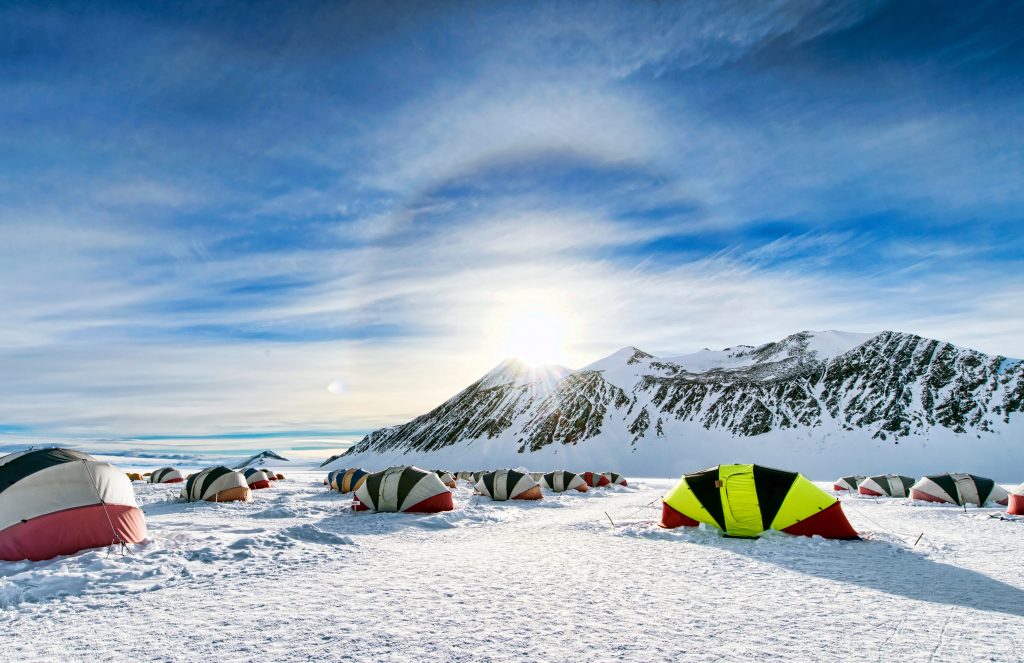
Union Glacier Camp
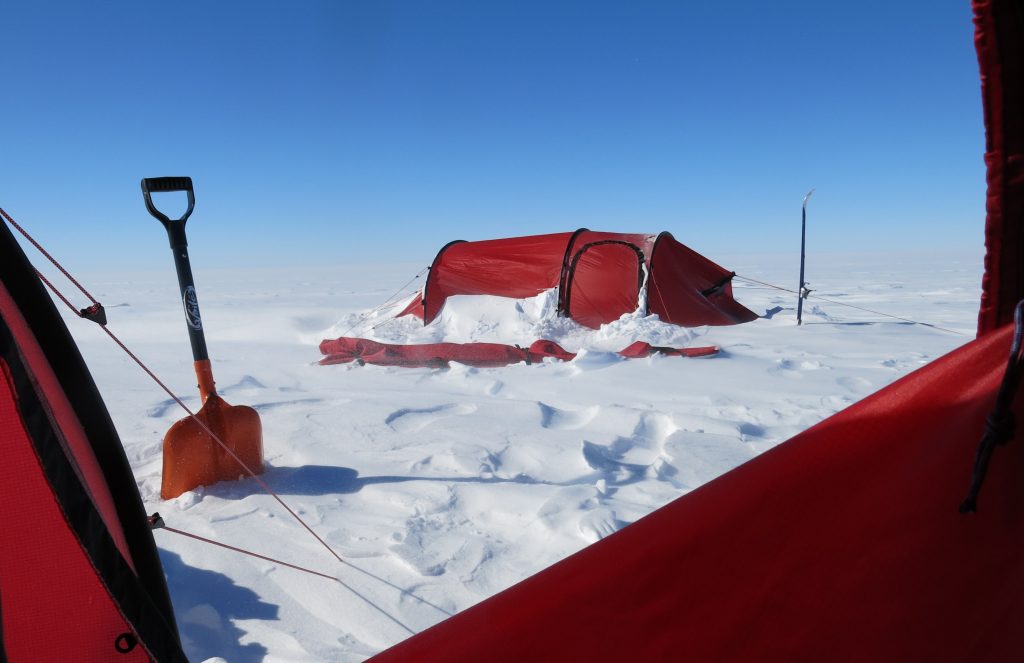
Field Camps
What’s Included
What’s Not Included
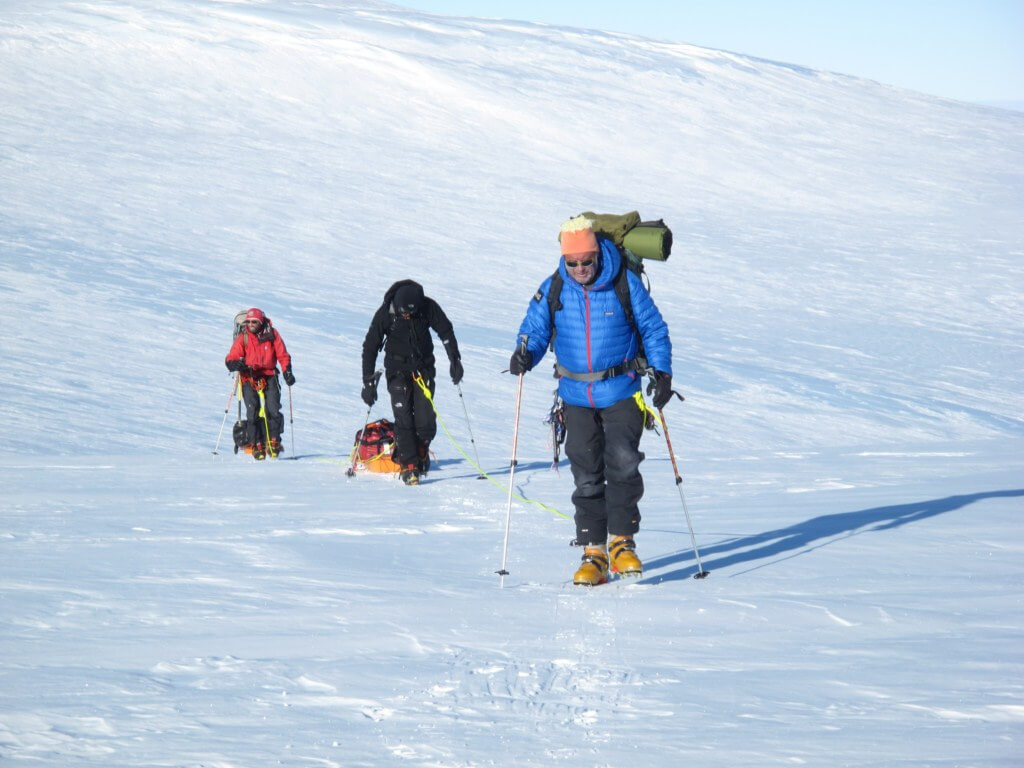
All About Mount Sidley
A true prize for pioneering adventurers, Antarctica’s tallest volcano and one of its most remote peaks awaits: Mount Sidley. Towering above the vast white expanse of Marie Byrd Land, this dormant giant offers a rare opportunity to explore untouched terrain where few have ever set foot. With its dramatic caldera, sweeping icefields, and sense of absolute isolation, Mount Sidley is more than a summit—it’s a bold step into the unknown, perfect for those seeking the ultimate off-the-map experience.



